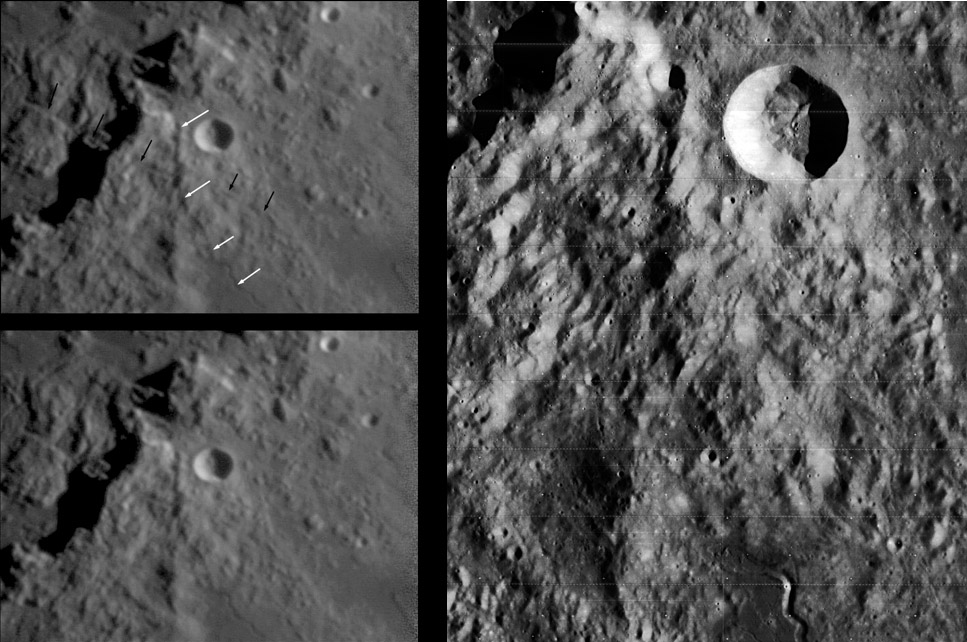
left image by Howard Eskildsen, Ocala, Florida; right image from Lunar Orbiter IV-102-h3
I took this photo in January and have seen these features several times since. I wonder if they might be surface features caused by faults under the Montes Apenninus. The black arrows point to interrupted linear features that are radial to Imbrium, that could conceivably be related to a deep underlying fault. The white arrows point to a rille starting to the west of Conon and arcing southward towards the lava flows around Rima Conon (marked by the bottom white arrow). If these surface irregularities are caused by deep underlying faults, perhaps the one marked with white arrows could be the source for the lava flow at the base of Montes Apenninus that produced Rima Conon. Also, the areas marked by black arrows to the right of the intersection of the two (possible) faults appears shifted slightly to the north, compared to the other side. This could imply motion along the north-south fault and reveal their relative ages. Of course, this could also be the result of chance alignments and an overactive imagination.
Howard Eskildsen
CAW note: I have added the Lunar Orbiter IV frame of part of this area. Howard’s white arrowed feature does seem to be a chance alignment of hills, including the 5-6 very peculiar small knobs just north of the beginning of the Conon Rille. The black arrows identify a likely ancient fault trace that seems to continue to the west of the Apennine front. The Apennine basin rim does seem to have been broken into the large blocks that moved separately - accounting for its uneven edge. Good observation, Howard!
Technical Details:
January 27, 2007, 02:42 UDT. Meade 6″ f/8 refractor + NexImage + IR filter + 5X barlow.
Related Links:
Rükl 22
Yesterday's LPOD: A Modest Beginning & a Difficult Challenge
Tomorrow's LPOD: From the Moon to Paris
COMMENTS?
Register, Log in, and join in the comments.



